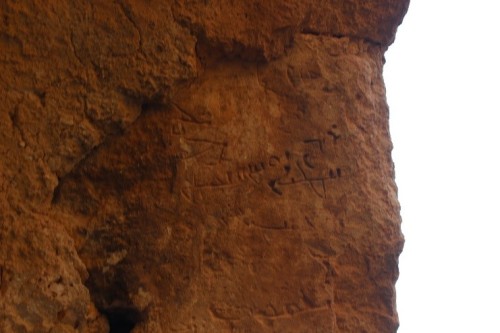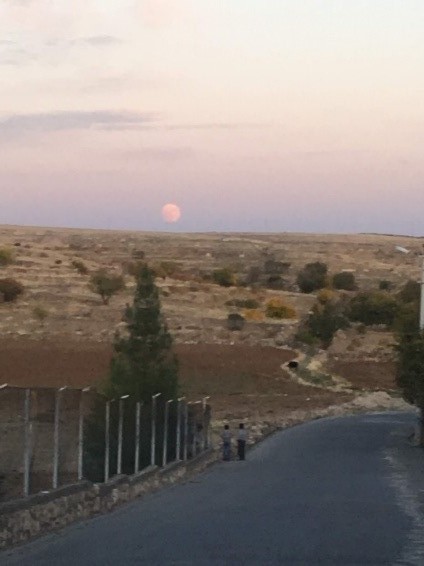
The story goes that in the early days of Islam, the second caliph, Umar al-Khattab (r. 634–644), summoned the Syrian Christian leaders to see him. As People of the Book, he explained, they were under his protection, but they would be subject to certain restrictions as well. Accordingly, the Christians came up with a set of promises. Among them were the following:
We shall not build in our cities or in their neighborhood, new monasteries, churches, convents, or monks’ cells, nor shall we repair, by day or by night, such of them as fall into ruin or are situated in the quarters of the Muslims.
We shall not display our crosses or our books in the roads or markets of the Muslims. We shall only use clappers in our churches very softly. We shall not raise our voices in church services or in the presence of Muslims, nor shall we raise our voices when following our dead.[1]
These promises, known together as the Pact of Umar—an early text, if not one that dates back to the actual Umar—became one of the guiding legal principles for the place of Christians under Islamic rule.
In the memory of the Christian community of Tur ‘Abdin, however, the message became garbled. They too remembered the story about meeting Caliph Umar, but they thought the caliph had given them slightly different instructions. In this version, Umar liked Christians so much that he encouraged them to be as noisy as they liked. One chronicler wrote:
Now Mor (St.) Gabriel went to the ruler of the Hagarenes, who was Umar the son of Khattab, in the city of Jazira. [Umar] received him with great joy, and after a few days, [Mor Gabriel] asked his written permission… that the sound of the church clappers would not cease, and that they might sing anthems before the body of a dead man from the moment when he leaves his house to be buried, along with many other customs. And [Umar] rejoiced that the holy man had come to see him, and [Mor Gabriel] returned to his monastery in high spirits.[2]
Needless to say, guaranteeing the use of loud church clappers and publicly Christian funerals was not exactly Umar’s intent. But the chronicler’s version gives an unexpected glimpse of how Christians in southern Anatolia understood their place in the early Islamic world. Even if official policy spelled out that Christians held a lower status than Muslims, the chronicler does not seem to think that Christians are subjugated. Instead, he describes how the sights and sounds of Christianity, which had become widespread in late antiquity, still predominate the landscape; Islam exists as a guiding political structure but not, in this area at least, the dominant cultural one. Recent scholarship has discussed how religious diversity thrived in the aftermath of the Islamic conquest, but sources such as the one above hint at not just the comparatively high numbers of non-Muslims but also at how confident and cheerfully vibrant non-Muslim religious culture could be.
I applied to ANAMED under the 2019–2020 Diversity and Coexistence theme, with the idea that studying Christian literary sources from the early Islamic era (7th–11th century AD/1st–4th century AH), together with physical sites from southern Turkey, would bring this cultural density to life. And indeed, to visit southern Turkey is to understand how the chronicler could (deliberately or otherwise) misinterpret Umar’s pact. Churches, shrines, and monasteries thickly dot the landscape. In one village, I was told that there were remains of twelve churches; in another, twenty-three or twenty-four. By comparison, my hometown in America, which is a hundred or more times bigger in terms of population, has only four. Being in Tur ‘Abdin brings a sense of reality to Adolf von Harnack’s description of Asia Minor as “das christliche Land” (the Christian land), a place where Christianity was seamlessly woven into daily life.

A Syriac inscription on the arch of a monastery in Tur ‘Abdin. It reads, “Rabban [Master] John, hear us sinners!” Inscriptions like this hint at the depths of religious life that have persisted in rural communities like those of Tur ‘Abdin for centuries.
Thinking about the visibility or audibility of Christian communities within the Islamic world should affect the way we think about coexistence as well. From the perspective of Islamic geographers of the time, religious minorities are sometimes either invisible or barely visible. Al-Yaqubi, a 9th-century writer, mentions Christians only once in his description of Baghdad, although in his time the city had many churches and monasteries as well as a significant Jewish and Zoroastrian population, and all he cares to mention about the north is that it is cold, icy, and full of hard-hearted Kurds.[3] On the other hand, Ibn Hawqal, a 10th-century Muslim geographer, lists Christian churches and monasteries, along with flourishing fields and vineyards, as part of the beauty of Nisibis (modern-day Nusaybin), though he gives no insight into their life or culture.[4] Reading only these sources gives the impression that Christianity was marginal or silent, a negligible part of the real Islamic culture that was developing to the south. Stories like that of the Pact, however, or seeing the sheer size and number of Christian monuments in Tur ‘Abdin, drive home why rural Christian communities could sometimes envision themselves as coexisting with Muslims nearly as equals, even if state and law imagined a hierarchy. In terms of their cultural influence, Islam was a part of their world, rather than the other way around.

The sun going down outside Midyat, a city that still retains a small Syriac population.
The sounds of those communities have become much more muted, giving way in modern times to the usual mix of old and new found in rural Anatolia—flocks of sheep browsing on the road, the cough of the dolmuş, and the hum of newer cars on stone or asphalt, the voices of children and families in the streets. But reading about their medieval past, one can imagine the sound of wooden church clappers and Syriac hymns taking their place in the streets beside them.
—————————————————————————————————–
[1] Bernard Lewis, Islam: From the Prophet Muhammad to the Capture of Constantinople (New York: Harper & Row, 1974), 218.
[2] Andrew Palmer, “A Critical Edition and Annotated Translation of the Qartmin Trilogy: Being the Lives of Samuel of Eštin, Simeon of Qartmīn, and Gabriel of Bēṭ Qūsṭān (Cambridge: Cambridge University Press, 1989), 72. I have modified Palmer’s translation slightly for clarity.
[3] Aḥmad ibn Abī Yaʻqūb al- Yaʻqūbī, Kitab al-Buldan, trans. Gaston Wiet (Cairo: L’Institut Français d’archéologie orientale du Caire, 1937), 6-8.
[4] Abū al-Qāsim Muḥammad Ibn Ḥawqal, Kitab Surat al-Ard, trans. J.H. Kramers and Gaston Wiet (Beirut: Commission internationale pour la traduction des chefs-d’oeuvre, 1964), 205.

